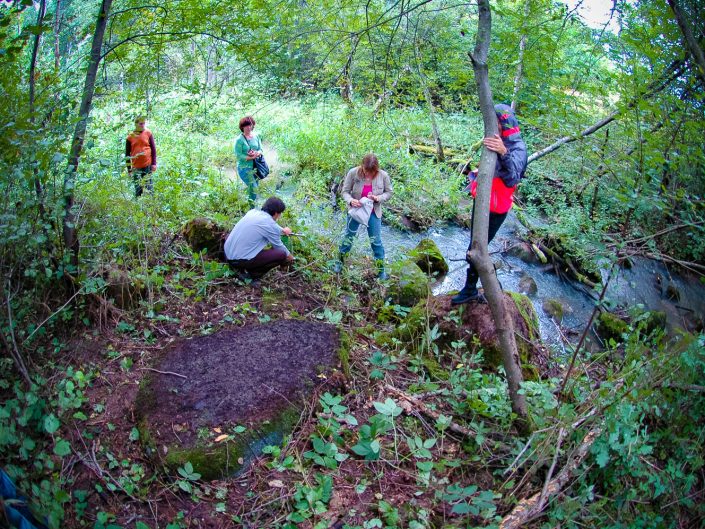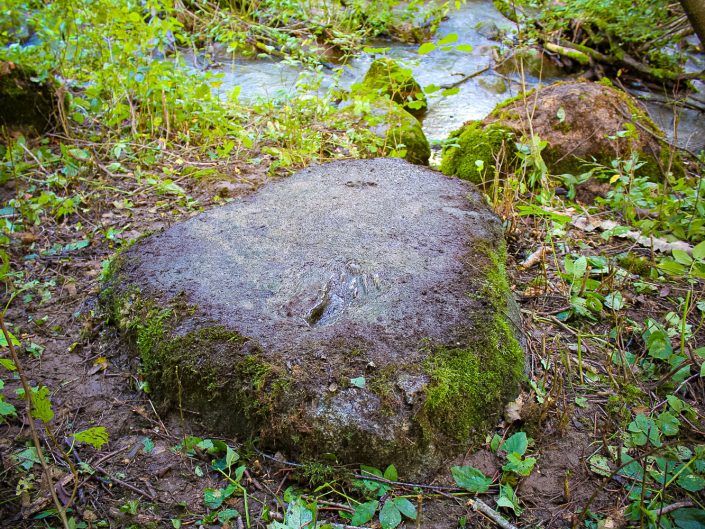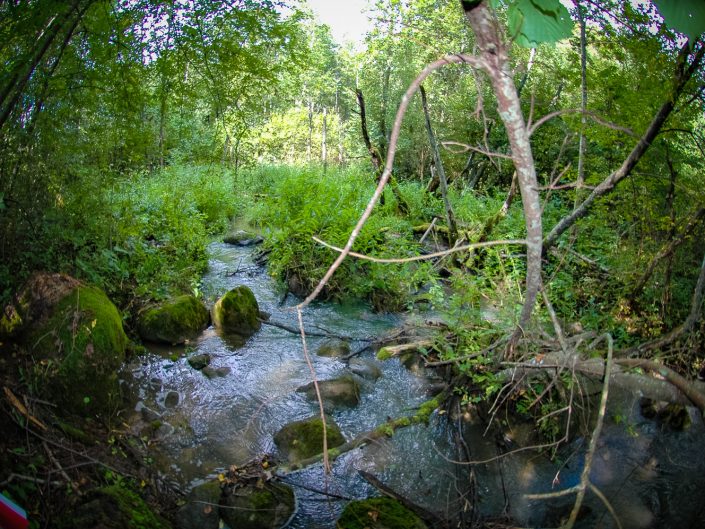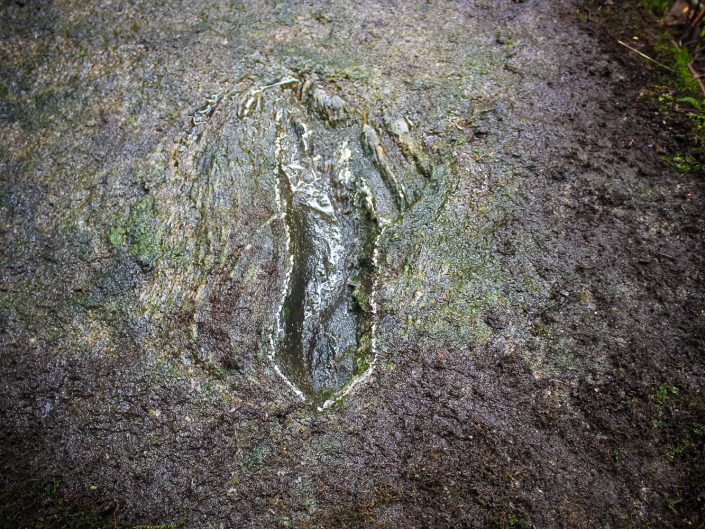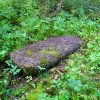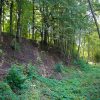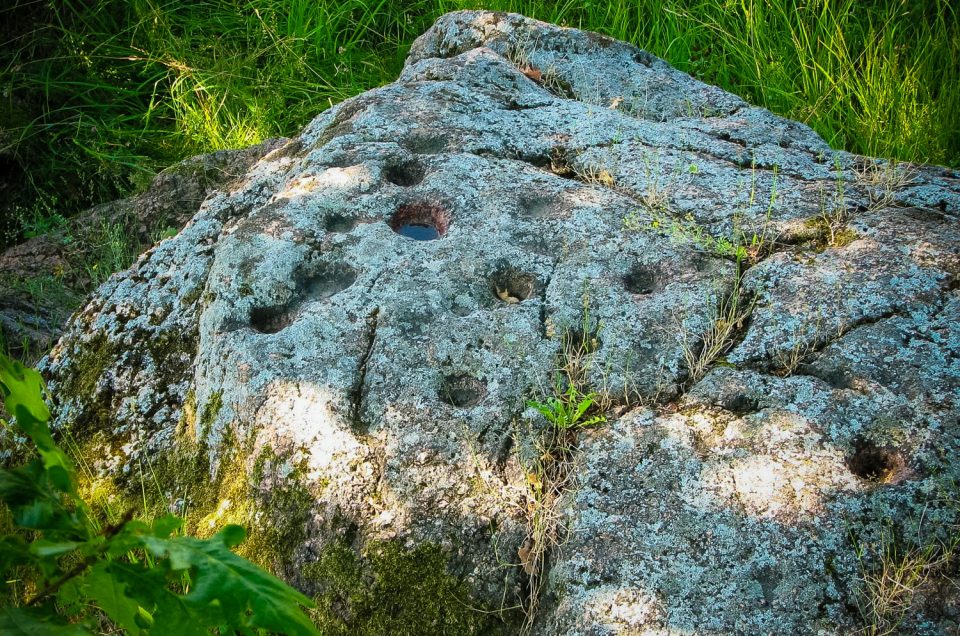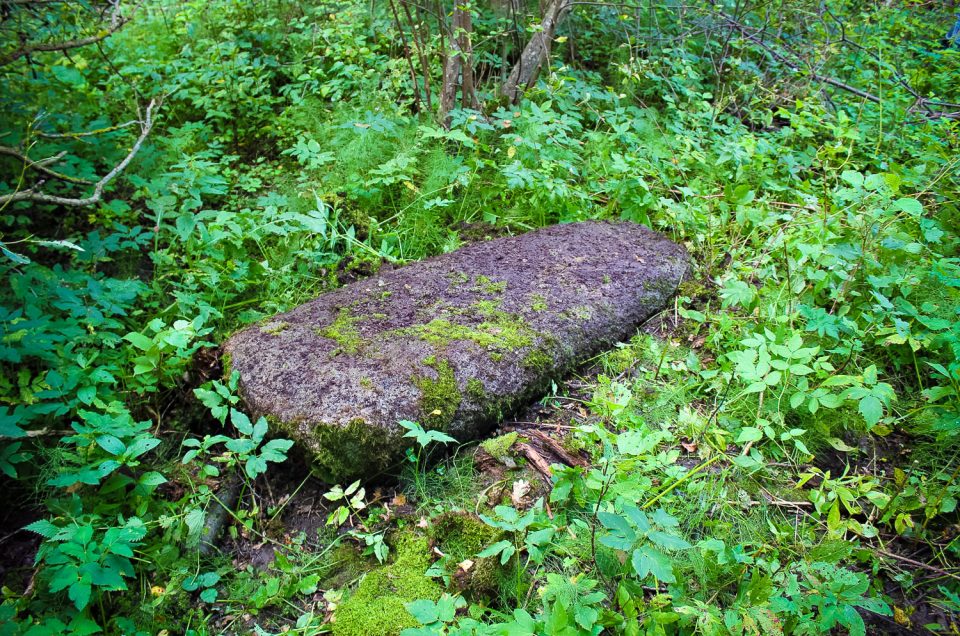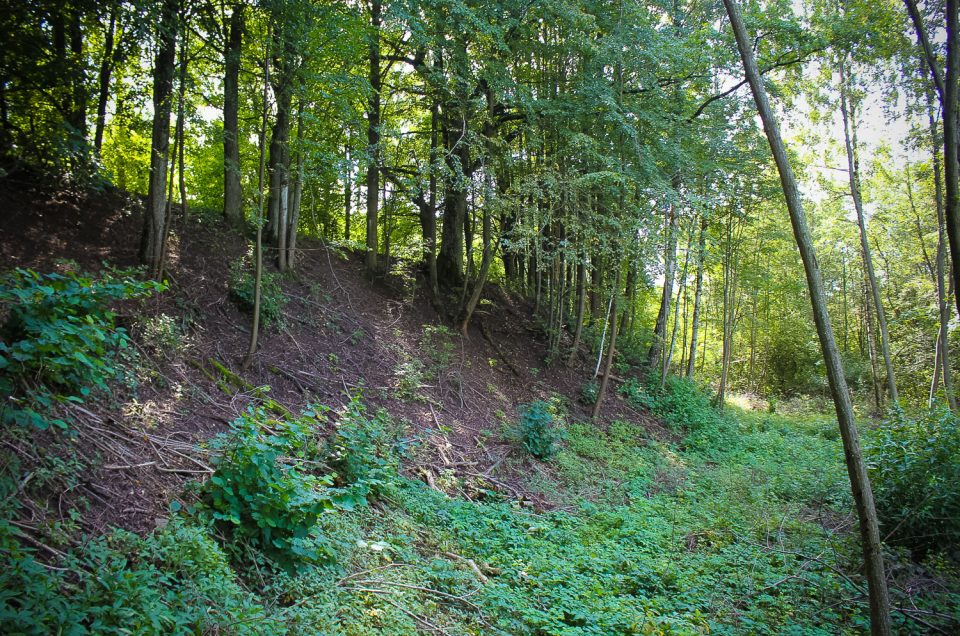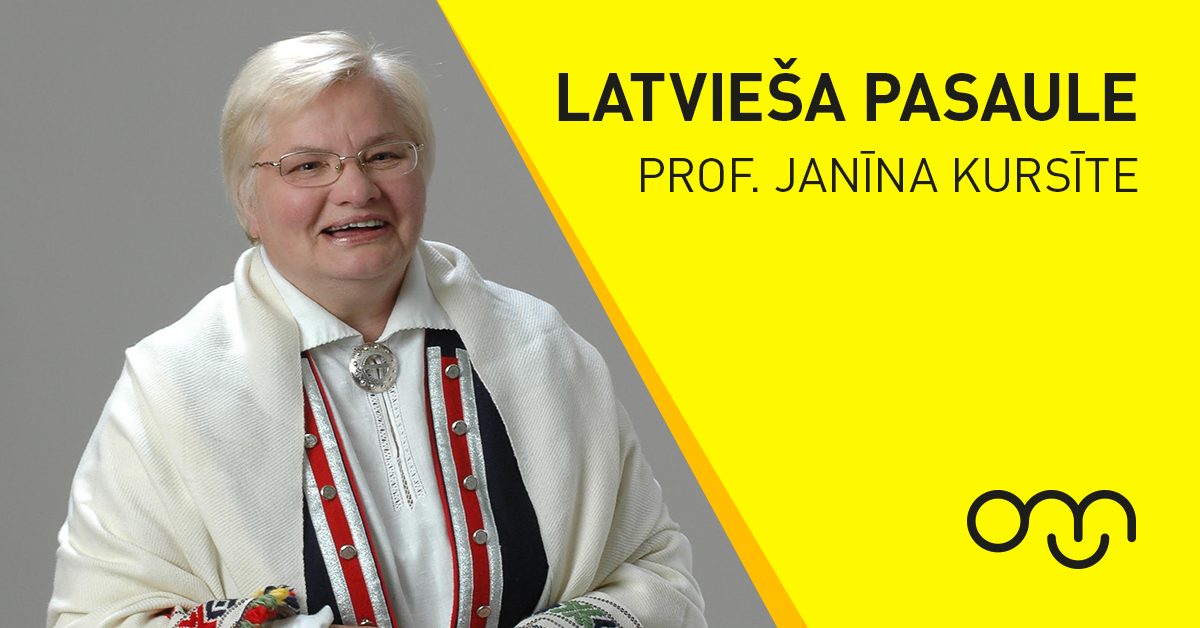Dimensions of the stone: length 1.7 m, width 1.2 m, height above the ground only 0.20–0.30 m, circumference – 4.70 m. Grey gneiss with average crystals. Foot: 30 x 8 cm, up to 4 cm deep. According to a legend next to this one there are other stones carried by the Devil into the bed of the spring.
The surroundings of Mežūbulaiši is a fabulous place. It is mentioned in several legends suggesting different sites for the location of the Devil’s Stone: „The master saw a strange creature at the swamp where there was a huge stone – it was half a man and half a cow-devil. The guys ran with sticks to kill the devil, but the devil got frightened and flew away. In his run the devil jumped on the stone and left two foot-prints there. They can still be seen there.” (According to FS 965, 153). (Literature: A. Štāls. Svētās pēdas (a description of some ancient religious cult monuments of Latvia) – a manuscript, Inv. no. 1639, received 17.01.1948., No. 67.) 1932, 86 pages: “N. 38. In Lielezers parish, at Mežūbulieši homestead, approximately 4 versts from where the Vadakste River falls into the Venta in the middle of the river there is a stone, the so-called “devil’s stone”. In the stone foot-print shape hollows can be seen.”; “Once along the Vadakste there used to be a border between two countries and a devil used to reside on the current Lithuaninan bank of the Vadakste. The devil would often cross the river to visit ladies. Other devils got angry at him for such behaviour and did not let him return. Thus the devil was forced to squat on the border, i.e., on the stone because he was not allowed to stay on either of the sides. As a result of the lengthy squating his horse and rooster foot-prints were pressed in the stone.” (According to A. Vanags.) Still other version of the legend was published in “Latvian Folk Tales”. Tales of Origin.” (“Latviešu tautas teikas. Izcelšanās teikas.”) – Rīga, 1991, pp. 89–90.
The largest collection of legends about the sites in the Mežūbelaiši surroundings can be found in the folklore collection “Welcome to Saldus” („Sveicināti Saldū”) selected and compiled by Māra Vīksna, – Rīga, Zinātne, 2010.
Extra materials:
Contains information from the project:

Added by
www.latvijas-pilskalni.lv, www.senvietas.lv un hillforts.eu izveidotājs un uzturētājs.
